#National Literacy Trust
Explore tagged Tumblr posts
Text
National Literacy Trust readies launch for its World of Graphic Novels reading challenge for schools
The National Literacy Trust launches its World of Graphic Novels reading challenge later this month, working with schools as the new academic year begins
2 notes
·
View notes
Text
Eleonora Marsella al The London Book Fair 2024
The London Book Fair (LBF) è una fiera internazionale dell’editoria che si svolge ogni anno a Londra, in Inghilterra. È considerata un evento di riferimento per il settore editoriale a livello mondiale. La prossima edizione della London Book Fair si svolgerà dal 12 al 14 marzo 2024 presso l’Olympia London. Quest’anno le organizzazioni benefiche designate sono il National Literacy Trust e Book…
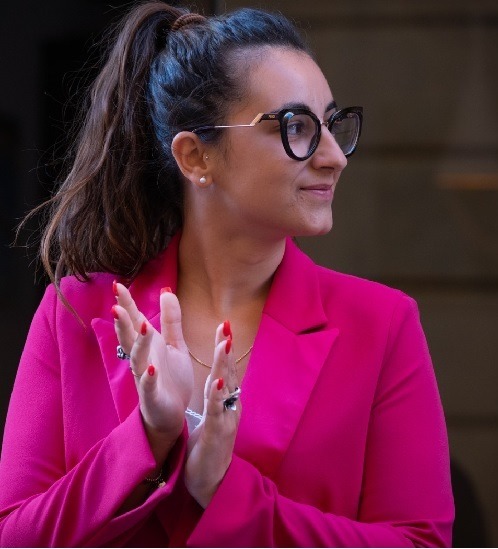
View On WordPress
#book aid international#eleonora marsella#il blog di eleonora marsella#national literacy trust#the london book fair
0 notes
Text
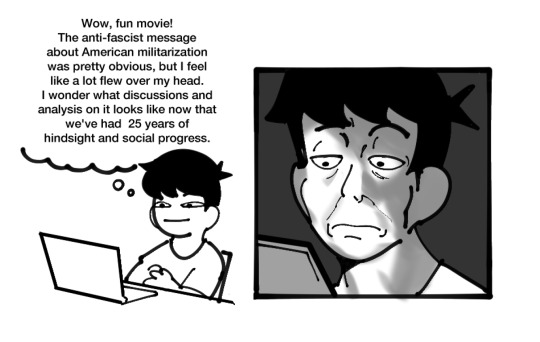
I watched Starship Troopers tonight.
#personal#dumb#my art#immediately after finishing i was pumped to watch some analysis vids on it#cuz i heard a lot of the drama about the original author being a pro military fascist and the director going “fuck that” and making a satir#scrolling through youtube search results was not promising. lots of male film buffs i would Not trust even on a first glance.#“The Critical Drinker” (pfp of a bearded man drinking alcohol) lol.#and then I saw cinemawins did a video on it and was like oh nice i haven't seen his stuff in a while but he's a pretty leftist creator#scrolled through the comments#second panel face#this sucks i'm outta here.#just leagues and leagues and leagues of anime pfps and right leaning people dogpiling on him for “not understanding what fascism is”#idk it's pretty alien and weird to me watching this movie and going “wow yeah that was pretty obvious huh” like literally the from opening#to the teacher preaching militance and only giving voting rights to “those who serve their nation first and earn it”#and then seeing droves of people online going#WHAT ARE YOU TALKING ABOUT? It's not anti-fascist and even if it was it's#the director's fault for desecrating heinlein's incredible sci-fi epic vision. ermm media literacy is dead.
5K notes
·
View notes
Photo

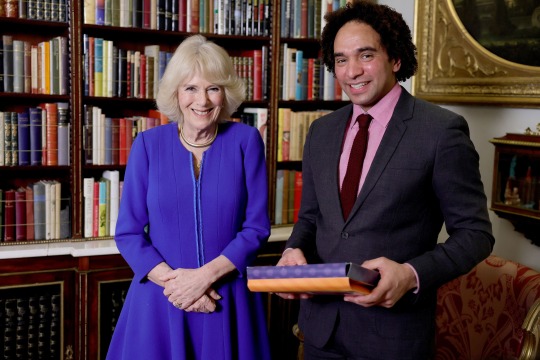
Queen Camilla’s Patronages
The National Literacy Trust (Patron from 16.11.2010)
One person in six in the UK lives with poor literacy. This holds them back at every stage of their life. As a child they won’t be able to succeed at school, as a young adult they will be locked out of the job market, and on becoming a parent they won’t be able to support their child’s learning. Lacking these vital skills undermines their wellbeing and stops them making a full contribution to the economic and cultural life of our nation. We work to improve the reading, writing, speaking and listening skills in the UK’s most disadvantaged communities, where up to 40 per cent of people have literacy problems. Our research and analysis make us the leading authority on literacy and drive our interventions. Because low literacy is intergenerational, we focus our work on families, young people and children.
We are incredibly grateful for Her Majesty’s support and commitment to the mission of the National Literacy Trust. Her Majesty’s visit to the Trust’s community programmes and Literacy Hubs in some of the poorest and most challenging parts of the country has been a source of inspiration for our teams and those we work with. As our Patron, Her Majesty’s belief in the power of reading and natural ability to encourage and engage children, families, adults and teachers has immeasurably strengthened our impact. - Jonathan Douglas CBE, Chief Executive of the National Literacy Trust
28 notes
·
View notes
Text
thoughts about the Cardassian writing system
I've thinking about the Cardassian script as shown on screen and in beta canon and such and like. Is it just me or would it be very difficult to write by hand?? Like.

I traced some of this image for a recent drawing I did and like. The varying line thicknesses?? The little rectangular holes?? It's not at all intuitive to write by hand. Even if you imagine, like, a different writing implement—I suppose a chisel-tip pen would work better—it still seems like it wasn't meant to be handwritten. Which has a few possible explanations.
Like, maybe it's just a fancy font for computers, and handwritten text looks a little different. Times New Roman isn't very easily written by hand either, right? Maybe the line thickness differences are just decorative, and it's totally possible to convey the same orthographic information with the two line thicknesses of a chisel-tip pen, or with no variation in line thickness at all.
A more interesting explanation, though, and the one I thought of first, is that this writing system was never designed to be handwritten. This is a writing system developed in Cardassia's digital age. Maybe the original Cardassian script didn’t digitize well, so they invented a new one specifically for digital use? Like, when they invented coding, they realized that their writing system didn’t work very well for that purpose. I know next to nothing about coding, but I cannot imagine doing it using Chinese characters. So maybe they came up with a new writing system that worked well for that purpose, and when computer use became widespread, they stuck with it.
Or maybe the script was invented for political reasons! Maybe Cardassia was already fairly technologically advanced when the Cardassian Union was formed, and, to reinforce a cohesive national identity, they developed a new standardized national writing system. Like, y'know, the First Emperor of Qin standardizing hanzi when he unified China, or that Korean king inventing hangul. Except that at this point in Cardassian history, all official records were digital and typing was a lot more common than handwriting, so the new script was designed to be typed and not written. Of course, this reform would be slower to reach the more rural parts of Cardassia, and even in a technologically advanced society, there are people who don't have access to that technology. But I imagine the government would be big on infrastructure and education, and would make sure all good Cardassian citizens become literate. And old regional scripts would stop being taught in schools and be phased out of digital use and all the kids would grow up learning the digital script.
Which is good for the totalitarian government! Imagine you can only write digitally. On computers. That the government can monitor. If you, like, write a physical letter and send it to someone, then it's possible for the contents to stay totally private. But if you send an email, it can be very easily intercepted. Especially if the government is controlling which computers can be manufactured and sold, and what software is in widespread use, etc.
AND. Historical documents are now only readable for scholars. Remember that Korean king that invented hangul? Before him, Korea used to use Chinese characters too. And don't get me wrong, hangul is a genius writing system! It fits the Korean language so much better than Chinese characters did! It increased literacy at incredible rates! But by switching writing systems, they broke that historical link. The average literate Chinese person can read texts that are thousands of years old. The average literate Korean person can't. They'd have to specifically study that field, learn a whole new writing system. So with the new generation of Cardassian youths unable to read historical texts, it's much easier for the government to revise history. The primary source documents are in a script that most people can't read. You just trust the translation they teach you in school. In ASIT it's literally a crucial plot point that the Cardassian government revised history! Wouldn't it make it soooo much easier for them if only very few people can actually read the historical accounts of what happened.
I guess I am thinking of this like Chinese characters. Like, all the different Chinese "dialects" being written with hanzi, even though otherwise they could barely be considered the same language. And even non-Sinitic languages that historically adopted hanzi, like Japanese and Korean and Vietnamese. Which worked because hanzi is a logography—it encodes meaning, not sound, so the same word in different languages can be written the same. It didn’t work well! Nowadays, Japanese has made significant modifications and Korean has invented a new writing system entirely and Vietnamese has adapted a different foreign writing system, because while hanzi could write their languages, it didn’t do a very good job at it. But the Cardassian government probably cares more about assimilation and national unity than making things easier for speakers of minority languages. So, Cardassia used to have different cultures with different languages, like the Hebitians, and maybe instead of the Union forcing everyone to start speaking the same language, they just made everyone use the same writing system. Though that does seem less likely than them enforcing a standard language like the Federation does. Maybe they enforce a standard language, and invent the new writing system to increase literacy for people who are newly learning it.
And I can imagine it being a kind of purely digital language for some people? Like if you’re living on a colonized planet lightyears away from Cardassia Prime and you never have to speak Cardassian, but your computer’s interface is in Cardassian and if you go online then everyone there uses Cardassian. Like people irl who participate in the anglophone internet but don’t really use English in person because they don’t live in an anglophone country. Except if English were a logographic writing system that you could use to write your own language. And you can’t handwrite it, if for whatever reason you wanted to. Almost a similar idea to a liturgical language? Like, it’s only used in specific contexts and not really in daily life. In daily life you’d still speak your own language, and maybe even handwrite it when needed. I think old writing systems would survive even closer to the imperial core (does it make sense to call it that?), though the government would discourage it. I imagine there’d be a revival movement after the Fire, not only because of the cultural shift away from the old totalitarian Cardassia, but because people realize the importance of having a written communication system that doesn’t rely on everyone having a padd and electricity and wifi.
#if I read over this again I will inevitably want to change and add things so I'm refraining from doing that. enjoy whatever this is#forgive my very crude recounting of chinese and korean history! I am neither a historian nor a linguist#but I will NOT apologize for talking abt china so much. that's my culture and I'm weird abt it bc of my family history#and it's my GOD GIVEN RIGHT to project what little I know abt it onto all my worldbuilding#also I've never actually read abt any of the various cardassian conlangs but I'm curious if this contradicts or coincides with any of them#I still want to make my own someday. starting college as a linguistics major (in 2 weeks!!) so presumably I will learn how to do that#narcissus's echoes#ds9#asit#star trek#cardassians#cardassian meta#a stitch in time#hebitians#lingposting
756 notes
·
View notes
Text
How we get rid of the American oligarchy
ROBERT REICH
JAN 16

Friends,
In what was billed as his “farewell address,” President Biden yesterday warned America that the nation is succumbing to an “oligarchy” of the ultra-wealthy, and the “dangerous concentration of power” they pose to democratic ideals:
“Today, an oligarchy is taking shape in America of extreme wealth, power and influence that literally threatens our entire democracy, our basic rights and freedoms and a fair shot for everyone to get ahead.”
He’s right, of course.
Fascism starts with the Trump derriere-kissing we’re now witnessing by the wealthiest people in America, who own the biggest megaphones and thereby determine what information Americans get. What they get back from Trump is raw power to do whatever they want.
Elon Musk — the richest person in the world — controls X, which under his leadership has become a cesspool of lies and bigotry.
Musk has posted or replied to more than 80 posts about the Los Angeles fires, many of which downplayed the role of climate change — placing blame instead on individual female firefighters of color and lesbian firefighters, including posting their names and faces.
He boosted an hour-long propaganda video by right-wing conspiracy theorist Alex Jones that claimed the fires were “part of a larger globalist plot” to cause the collapse of the United States; Musk replied simply, “True.”
He repeatedly amplified claims that the Los Angeles Fire Department’s investments in diversity, equity, and inclusion (DEI) programs cost lives by wasting money that could have been spent on disaster response, suggesting that the destruction could have been mitigated if more white men had been retained.
Musk has made it clear that his platform’s main role during the upcoming Trump regime will be to back whatever Trump chooses to do and criticize Trump’s critics with more lies and bigotry.
Jeff Bezos — the second-richest person in America — owns Amazon. His Prime Video just announced it will spend a whopping $40 million for a documentary about Melania Trump, for which she is an executive producer, and stream it on Amazon Prime.
What else will Amazon promote or censor, to curry favor with Trump?
Bezos also owns The Washington Post. Just before the election, he killed a Post endorsement of Kamala Harris. Earlier this month, a Post cartoonist quit after the newspaper spiked a cartoon showing Bezos and Facebook’s Mark Zuckerberg kneeling before Trump.
Mark Zuckerberg — the third-richest person in America — owns Facebook, Instagram, and Threads. He’s sucking up to Trump by ridding his platforms of content moderation so that they, too, can amplify Trump’s lies and bigotry.
Announcing the end of fact-checking on his platforms, Zuckerberg says he thinks it will “take another ten years” of fact-free operation before Meta is “back to the place that it maybe could have been if I hadn’t messed that up in the first place.”
Zuckerberg says the deciding factor was the “cultural tipping point” of Trump’s election.
Not only will Zuckerberg fire most of the 40,000 fact-checkers who have screened his platforms’ posts for accuracy, but he will be moving the few who remain from California to Texas, “where there’s less concern about the bias of our teams.”
So Texas workers will be less “biased” than California workers? As Dan Evon of the nonprofit News Literacy Project notes, the move “provides an air of legitimacy to a popular disinformation narrative: that fact-checking is politically biased.”
Training materials for Meta’s remaining trust and safety workers include examples of speech that Zuckerberg now wants permitted:
“Immigrants are grubby, filthy pieces of shit.”
“Gays are freaks.”
“Look at that tranny (beneath photo of 17 year old girl).”
Trump praised the move, saying “I think they’ve come a long way.”
A reporter asked Trump if his threats to put Zuckerberg in prison caused the change in policy. “Probably,” Trump responded. Perhaps the Federal Trade Commission’s lawsuit against Meta played a role as well?
Zuckerberg has also promoted prominent Republican Joel Kaplan to be Meta’s chief global affairs officer and put Dana White, CEO of Ultimate Fighting Championship and a close friend of Trump, on its board.
My friends, none of this has anything to do with freedom of speech. It has everything to do with the power of money.
The three richest Americans want to decide what the rest of us will know about the coming Trump regime.
Concentrated wealth is the enemy of democracy. As the great jurist Louis Brandeis is reputed to have said, “America has a choice. We can either have great wealth in the hands of a few, or we can have a democracy. But we cannot have both.”
As we slouch into the darkness of Trump II, America needs people and institutions that speak truth to power, not align themselves with it.
When we the people regain power, three reforms are critically necessary to begin to tame the oligarchy:
X, Amazon, Meta, and other giant tech media platforms must either be busted up or treated as public utilities, responsible to the public.
Hugely wealthy individuals must not be permitted to own critical media.
Large accumulations of individual wealth must be taxed.
My friends, we will prevail.
58 notes
·
View notes
Text
FTH 2025 Supported Org: News Literacy Project
In the age of the internet, one of the greatest threats to public well-being is misinformation. The sheer volume of available information is enough to cause us mental and emotional damage that can make it more difficult to react thoughtfully. Furthermore, our information environment is saturated in misinformation and disinformation, often explicitly engineered to drive our political choices. Furthermore, in the past few weeks, Meta has followed X's lead and decided to discontinue fact-checking on Facebook and Instagram.
A few days after the election, the head of Media Matters described the United States as "pickled in misinformation," and all signs suggest that the problem is getting worse, not better.

The News Literacy Project, a nonpartisan education nonprofit founded in 2008, aims to improve news literacy -- the ability to determine the credibility of news and other information and to recognize the standards of fact-based journalism to know what to trust, share and act on -- in this challenging, high-speed information environment. The NLP is building a national movement to create systemic change in American education to ensure all students are skilled in news literacy before they graduate high school, giving them the knowledge and ability to participate in civic society as well-informed, critical thinkers. A more news-literate populace will be less likely to fall for online hoaxes, and also better equipped to make well-informed decisions about our common lives and governance.
You can support News Literacy Project as a creator in the 2025 FTH auction (or as a bidder, when the time comes to donate for the auctions you’ve won.)
61 notes
·
View notes
Note
Katara crushing on Jet:
Immediately trusts him and is excited to see his hideout
Immediately attracted to the fact that he's a heroic do-gooder who stands up for the oppressed and takes care of others
Blushes and hugs him, clearly showing her interest
Trusts him implicitly and passionately defends him against Sokka's accusations, is extremely protective of Jet.
Katara crushing on Aang:
Is ready to leave her tribe and join Aang in the first fucking episode: "Fine! Then I'm banished, too! [Drags Aang away.] Come on Aang, let's go." immediately trusting him
Defends Aang in the Storm: "Aang is the bravest person I know. He's done nothing but help people and save lives since I met him!" ; demonstrating that she thinks he's a hero
Shyly asks Aang to kiss her in the Cave of 2 Lovers, initiates hugs 7 times in the show, kisses him on the cheek three times, blushes countless times.
Tells Aang she'll 100% trust whatever decision he makes when Zuko asks to join the group, even though she is clearly unhappy.
Tells Zuko: "You make one step backward, one slip-up, give me one reason to think you might hurt Aang, and you won't have to worry about your destiny anymore; because I'll make sure your destiny ends, right then and there, permanently.” , showing how protective she is.
Tells Aang after he disappears: Plese don't go, Aang. The world can't afford to lose you to the Fire Nation. And neither can I."
Tells Zuko in the finale: "Aang won't lose. He's gonna come back." ; showing 100% confidence and faith
Zutarians: Katara treats Aang like a little brother! There was no build-up! She clearly never liked him! It was forced! She was just a prize! Aang was entitled and possessive and Katara never reciprocated! She marries Aang out of duty but she actually longs for Zuko!
....do Zutarians understand characterisation? Do they have basic media literacy skills? HOW MUCH CLEARER DOES KATARA HAVE TO BE?
Oh, but Aang isn't angsty and angry like Jet, but Zuko is! Nevermind that said angst was not part of why Katara was attracted to him, and Jet's disproportionate responses when angry made Katara stop liking him.
43 notes
·
View notes
Text
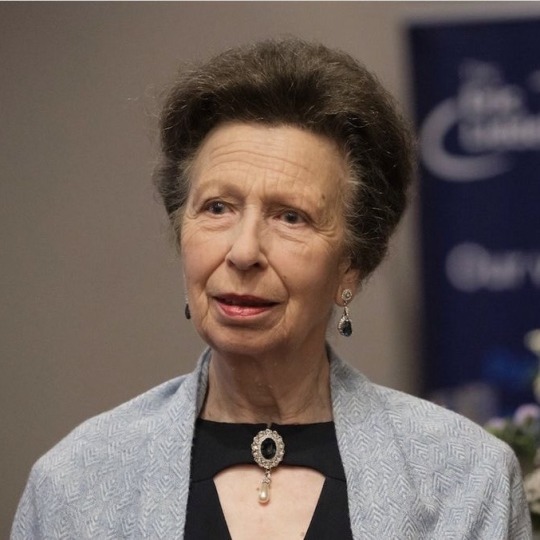








The Princess Royal’s Official Engagements in November 2024
01/11 As Visitor of Strathcarron Hospice, visited the Hospice. 🫂
As Deputy Colonel-in-Chief of The Royal Regiment of Scotland, visited the Headquarters at Edinburgh Castle. 🫡
As Patron of the Eric Liddell 100, attended an Awards Dinner at George Watson’s College, in Edinburgh. 🏃🏼♂️🍽️🏆
05/11 As Master of the Corporation of Trinity House, presented Merchant Navy Medals for Meritorious Service at the Corporation of Trinity House. 🎖️
As President of Racing Welfare, attended a Reception at Sladmore Gallery. 🏇🏼
06/11 On behalf of The King, held an Investiture at Windsor Castle. 🎖️
As Patron of the Learning and Work Institute, and as President of Carers Trust, this attended the “Driving Change” Conference at City Lit College. 📒
As President of The Duke of Edinburgh’s Commonwealth Study Conferences, attended a Reception at Brunswick Group. 📚
As Patron of Shaftesbury, later held a 180th Anniversary Dinner at St James’s Palace. 🍾
07/11 As Vice Patron of the British Horse Society, attended the Annual Awards and Race Day at Newbury Racecourse. 🐴
Alongside the King and the Duchess of Gloucester, held a Reception at Buckingham Palace for medallists of the Paris 2024 Olympic and Paralympic Games. 🥇🥈🥉
09/11 With Sir Tim Was present at the Royal British Legion Festival of Remembrance at the Royal Albert Hall. Also in attendance were, The Prince and Princess of Wales, The Duke and Duchess of Edinburgh, The Duke and Duchess of Gloucester, and The Duke of Kent were also present. 🌹
10/11 With Sir Tim Attended the National Service of Remembrance at the Cenotaph. Laid a wreath alongside the King, the Prince of Wales and the Duke of Edinburgh. Also in attendance were, the Princess of Wales, the Duchess of Edinburgh, the Duke and Duchess of Gloucester and the Duke of Kent. 🌹
11/11 unofficial Sir Tim, as GWR Advisory Board member, visited Swindon train station with the Poppies to Paddington, then travelled to Paddington Station by train. 🚝
unofficial Sir Tim Attended a Service of Remembrance at Paddington Station. 🌹
12/11 Attended the HIV Drug Therapy Glasgow Congress at the Scottish Event Campus. 💊
Visited the University of Glasgow’s Mazumdar-Shaw Advanced Research Centre. 🔬🥼
As Royal Patron of MND Scotland, attended a Supporters’ Reception at the MND Scotland Office. 🍾
13/11 Visited the College of Master Kilt Tailors’ Headquarters at Askival of Strathearn. 🪡🏴
Opened Letham4All’s Letham Community Hub. 🏢
Opened the YMCA Tayside Youth Centre in Perth. 👦👧
As Chancellor of the University of Edinburgh, held a Chancellor’s Dinner at the Palace of Holyroodhouse. 🎓🍽️
14/11 As Chancellor of the University of the Highlands and Islands, attended the Nursing and Optometry Graduation Ceremony in Inverness. 🩺🎓
16/11 As Patron of the Scottish Rugby Union, attended the International Rugby Match between Scotland and Portugal at Murrayfield Stadium in Edinburgh. 🏴🇵🇹🏉
19/11 Attended a Reception at the Suffolk County Council Offices before opening the Gull Wing Bridge in Lowestoft. 🌁🎗️✂️
Unofficial Sir Tim presented the Billy Deacon SAR Awards during the Air League’s Annual Reception Ceremony at the House of Commons. ✈️
20/11 As President of the Royal Yachting Association attended the British Olympic Sailing Team Luncheon at the Royal Thames Yacht Club. ⛵️🍴
As Commandant-in-Chief (Youth) of St John Ambulance, attended the Young Achievers’ Reception at the Priory Church of the Order of St John in London. ⛑️🩹
As Chancellor of the University of London, attended the Foundation Day at Senate House, and conferred an honorary doctorate in Literature on Queen Camilla, for her public work in the field of literature and literacy. 📜🎓
21/11 As Patron of the Royal College of Anaesthetists, attended their Winter Symposium. 💉❄️
As President of the City and Guilds of London Institute, attended The Princess Royal Training Awards Conference at Goldsmiths’ Hall. 🏆 Sir Tim Laurence presented the Billy Deacon SAR Awards during the Air League’s Annual Reception Ceremony, held at the House of Commons, on 19 November 2024.
With Sir Tim As President of the British Olympic Association, attended the Team GB Ball at the Roundhouse. ✨
26/11 Opened the Hospice UK National Conference at the Scottish Event Campus in Glasgow. 🏥
27/11 As Chancellor of the Health Sciences University, attended a Graduation Ceremony at the Bridge Theatre in London. 🎓📜
As Patron of Transaid, attended the Annual Showcase at the Africa Centre in London. 🚛🚚
As Royal Fellow of the Royal Academy of Engineering, attended a New Fellows’ Dinner at Drapers’ Hall. 🍽️
28/11 On behalf of the King held morning and afternoon Investitures at Buckingham Palace. 🎖️
29/11 As Patron of the Moredun Foundation, attended a Conference at the Moredun Research Institute in Penicuik. 🐖🐑🐄
Total official engagements for Anne in November: 43
2024 total so far: 414
Total official engagements accompanied/represented by Tim in November: 3
2024 total so far: 94
FYI - due to certain royal family members being off ill/in recovery I won't be posting everyone's engagement counts out of respect, I am continuing to count them and release the totals at the end of the year.
#hardest working royal#princess anne#we have seen tim at a lot of his own engagements this month but they aren’t included on the CC so not counted in my calculations sadly#operation working royal tim 2025 🫡#princess royal#tim laurence#timothy laurence#november 2024#aimees unofficial engagement count 2024
36 notes
·
View notes
Text
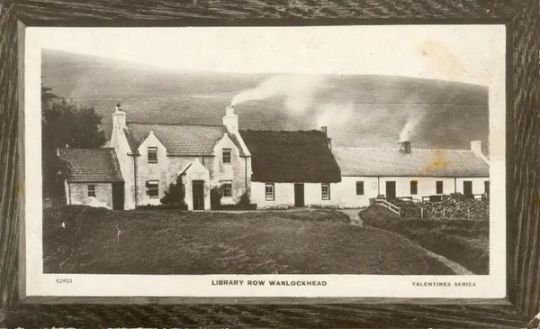
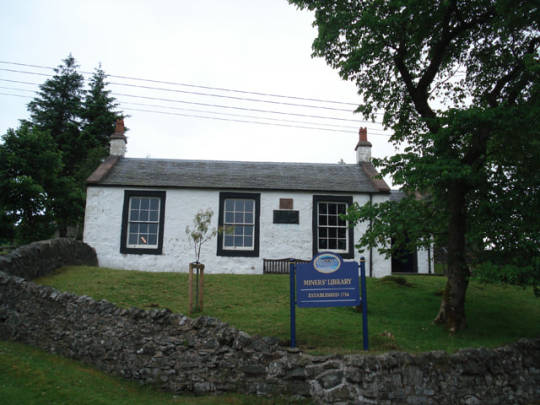
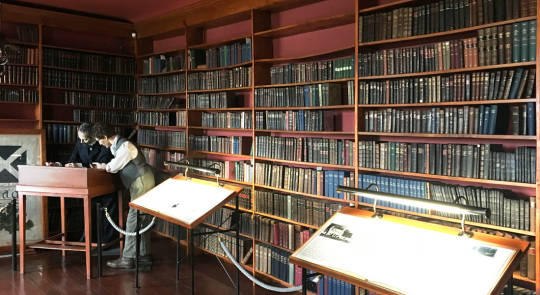
On November 1st 1756 the Wanlockhead Miner’s Library was established, the second oldest subscription Library in Scotland and indeed Europe.
It was only the second subscription library for working people to be founded anywhere in the World. It was closely modelled on the first, the neighbouring Leadhills Library, founded over ten years earlier in 1741.
Throughout the mid eighteenth and nineteenth centuries libraries like Wanlockhead flourished, it is one of the few remaining examples of a phenomenon which was once found throughout Scotland. That of the community (or subscription) library. A community library is really a sort of club. Members can join upon payment of an entry fee and afterward pay a yearly subscription. Money raised in this way was mostly fed back into the purchase of stock and gradually a permanent library is accumulated.
The founding of a library suggests that there were high levels of literacy amongst the local population. The ability of the miners to read and write can be traced back to the village school which was established by the Duke of Bucchleuch in the eighteenth century and a teacher was employed to teach local children.
The Society has a fascinating history for example it amassed a collection of around 3,717 books by 1925, although only around 2572 or around two-thirds are housed in the library today.
Having ceased to function as a working library in the early 1930s the fate of the book collection and society archives appeared sealed. However, having been looked after by villagers for a number of years, the preservation and promotion of the collection became a fundamental aim of Wanlockhead Museum Trust when it was formed in 1974. The Miner’s Library collection itself became a ‘Recognised Collection of National Significance’ in 2008. A survey of its archives was recently added to the National Records and Archives of Scotland Register.
In addition to gaining this official recognition, the Museum was also awarded £40,000 by Museums and Galleries Scotland which was used to research and promote the collection.
More about the Leadhills Museum and the library here
19 notes
·
View notes
Text
A little bit of context for today's story post: some Lorimer lore, if you will. content warnings for death and pregnancy.



Above: Formal portrait commissioned by the Palace, c. 1919, age 22. Left: Pictured c. 1905, age 8, with her parents. Right: Pictured c. 1914, age 17.
Frances, Princess of Romilly, (born Frances Elizabeth Imogen Selby; March 5, 1897 - April 11, 1924) was the first wife of King Arthur V and the mother of his three eldest children: King Frederick IV, Prince Patrick, Duke of Statham, and Prince Louis, Duke of Atteberry.
Frances Selby was born on March 5, 1897 in Maloret, Iverny to Lt. Col. James Selby and Lady Imogen Penrose, a niece of Earl Maurice Penrose, husband of King Charles IV’s fifth daughter Princess Georgia. The marriage was loving, but morganatic, and Frances was the only surviving child.
Frances was enrolled in the Maloret Girls’ School at age six, on the insistence of her mother. She graduated in 1914 and had planned to enroll at St. Anne’s Women’s College in Lorain, but the outbreak of World War I prevented this. Frances’s father, James, was drafted into the war at age 50 for his military accomplishments in the 1889 Isle of Leonne Offensive, a brief land dispute between Iverny and the United Kingdom. His actions as a Lieutenant colonel during a 1915 Western Front battle, while directly in opposition to his superior’s commands, were responsible for saving the lives of nearly 1,200 Ivernian soldiers. He was dishonorably discharged for insubordination in November 1915, but received a pardon directly from the Queen. In January 1916, he was knighted by Queen Jane II and awarded an Augustan Cross for valor, the highest military honor in Iverny. Frances reportedly met then Prince Arthur of Ettinger, the Queen’s cousin, at this ceremony.
Prince Arthur and Frances quickly bonded over their shared love of books and reading. According to the diaries of his sister Princess Antonia, the prince reportedly gave up to thirty-three books as gifts to the young Frances, and loaned out several copies from both his personal library and the Queen’s Clemons Palace library. It did not come as a surprise to the family when Arthur asked the Queen’s permission to marry Frances in the fall of 1917. The match proved unpopular in the Assembly and amongst the Royal Family for being morganatic, especially because Arthur was second-in-line to the throne behind his father, and Queen Jane II had yet to marry and produce an heir. However, the Queen approved the marriage on the grounds that morganatic marriages, while unpopular, were not against the law, and that she “saw the deep Affection and Trust between these two young people.” This infuriated Arthur’s mother, the Duchess of Ettinger, who had been trying to arrange a marriage between Arthur and one of her Romanov relatives for years. The wedding and marriage were delayed by the Queen for months at the Duchess’s insistence as the Russian Revolution made contact with her family almost impossible.
The Queen died unexpectedly at age 26 in November 1918 from the Spanish Flu, shocking the nation and sending the royal family into upheaval. The Duke of Ettinger ascended the throne as Richard V, and both his wife and the Assembly urged him to prohibit the marriage. The new king refused on the grounds that “continuation of the Family line is essential” and that “through all of their Hardships, Miss Selby and the Crown Prince have stayed true to themselves and steadfastly honoured the love between them. Despite her humble background, she will make a fine Queen for this nation.” The two were finally married in February 1919 at Herriot Cathedral in Gaucelin. The Princess became a dedicated patron of many of the same causes that the very popular Queen Jane II supported, such as labor and occupational safety and education, as well as several of her own, including literacy and public libraries, quickly endearing her to the skeptical public. Her popularity exploded almost overnight.
The couple’s first child, Prince Frederick of Romilly, was born in January 1920, followed by another son, Prince Patrick, in the summer of 1922. Both pregnancies and deliveries were easy and uncomplicated. When the Princess fell pregnant again in 1923, court diarists wrote that she complained often of exhaustion and chills, and was confined to bedrest for much of the pregnancy. In April 1924, the Princess went into labor. After almost eleven hours of no progress despite labor symptoms, the court physician determined that the baby was breeched and ordered a cesarean section. Court midwives desperately contested this decision, but the Princess agreed to the surgery. The child, Prince Louis of Romilly, was born healthy on April 8, 1924, and initially the Princess recovered well from the delivery. However, the next day, the Princess developed a fever and extreme fatigue, and her condition rapidly deteriorated. The Princess died on April 11, 1924 at 27 years old, three days after giving birth to her third son, from sepsis and postpartum hemorrhage. The nation, still reeling from the shock of losing Queen Jane II unexpectedly five years prior, was in shock, outrage, and disbelief, but none moreso than the Crown Prince himself.
#sims 4#the lorimers#lorimers: frances#lorimer lore#sims 4 historical#ts4 royalty#ts4 1910s#ts4 1920s#bluep.txt#cw pregnancy#cw death
8 notes
·
View notes
Text
Lakes International Comic Art Festival and partners continue work to promote comics as a valuable literacy tool
The Lakes International Comic Art Festival is continuing to develop its strategy to champion comics part in promoting literacy, buoyed by its own research and others
#Abraham Moss Community School#Bobby Joseph#Comic Art Europe#Comics Laureate#David Fickling Books#Lakes International Comic Art Festival#National Literacy Trust#Paul Hamlyn Foundation#Phoenix Comic
1 note
·
View note
Text
swifties and their parasocial relationship with joe alwyn, part 7 🦃
I like to call this one the Thanksgiving Conspiracy Theories edition, because they’ve been spending their entire thanksgiving weekend talking about joe alwyn nonstop, digging up “proof” of his “misdeeds”- and let’s just see what that proof is, shall we?
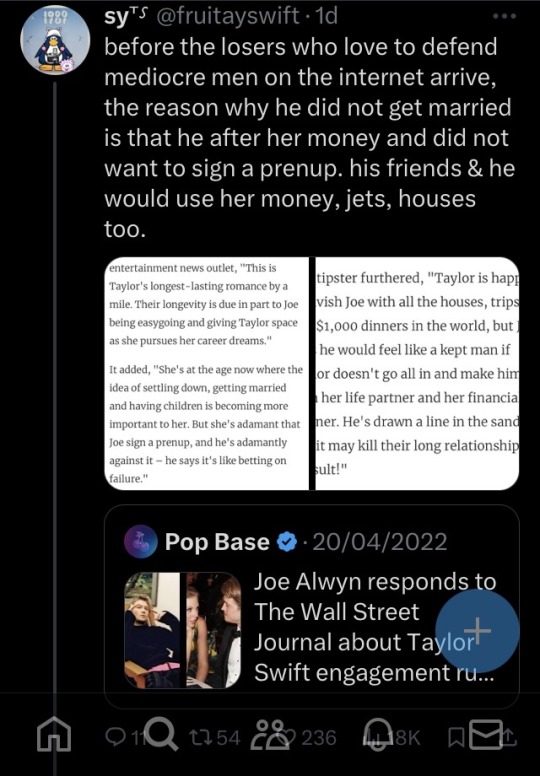
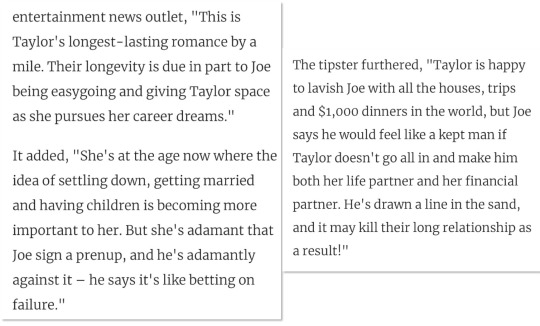
so as you can see, joe alwyn is an EVIL MAN who only wanted taylor’s money and jets. and we know this because the swiftie has cited a “trustworthy but not very popular outlet.”
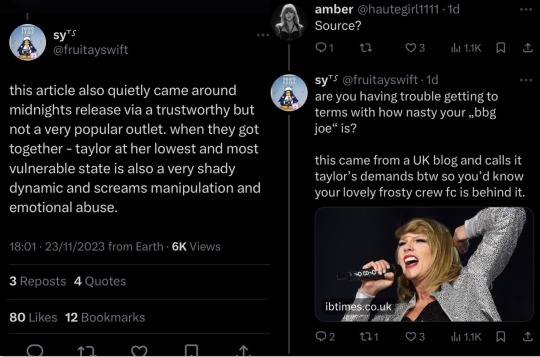
and the “trustworthy” outlet is, wait for it… a GOSSIP BLOG that cites THE NATIONAL ENQUIRER as their source of information.
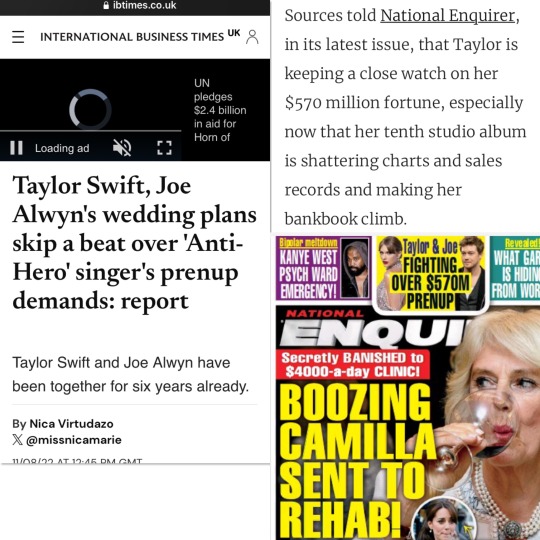
in case you didn’t know, the national enquirer is a fucking JOKE, known for its outrageous, false headlines, and for peddling far right Qanon conspiracy theories. and because swifties have no media literacy whatsoever, they’re treating the national enquirer as a trustworthy source and banging on about how “joe alwyn is a bad man who only loved taylor’s money and jets!”
and they accuse him of being ABUSIVE because he was there for her during some of her darkest times. and they’re also claiming that this man FORCED taylor swift to keep dating him when she wanted to break up. you just… can’t make this shit up.
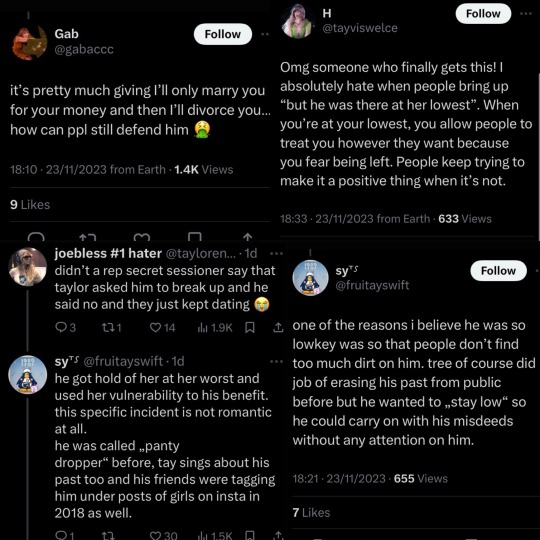
I made a post yesterday about deranged swifties who genuinely believe that joe alwyn is running tumblr accounts to talk shit about taylor and spread a “false narrative” to destroy her reputation. basically anyone who says anything remotely critical of taylor on tumblr is either joe alwyn or someone from “his camp.”
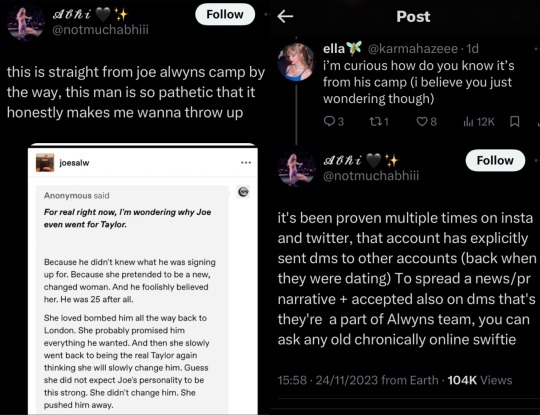
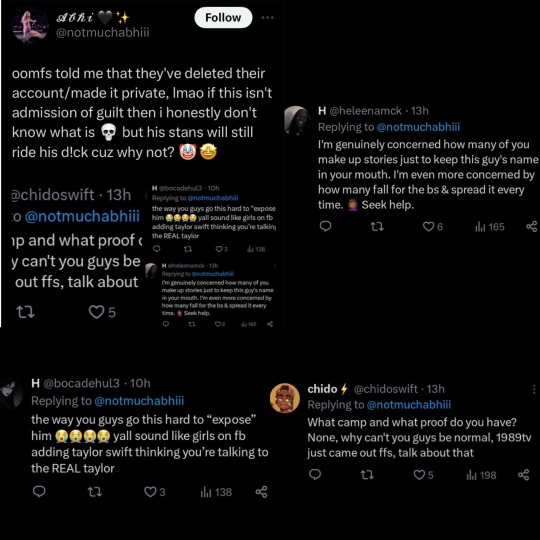
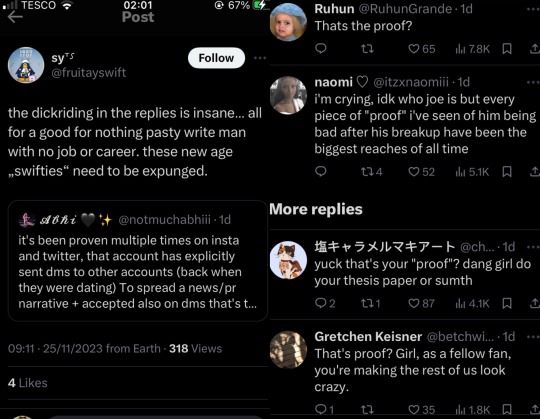
and their “proof” is literally just source: trust me bro and they’re calling anyone who questions their so-called evidence “dickriders.” very immature, but that is the intellect of the average swiftie online.
and last but not least, we’ve got the “dissections” of Lavender Haze and swifties talking about joe joe forced taylor to GASLIGHT HERSELF into thinking she didn’t want marriage because the big meanie joe wouldn’t marry her. 🙄 what kills me is they think they’re being such intellectuals, by going on a “deep dive analysis” of a relationship they know nothing about, but they just sound like those Qanon freaks. i mean, that’s basically what they are at this point.
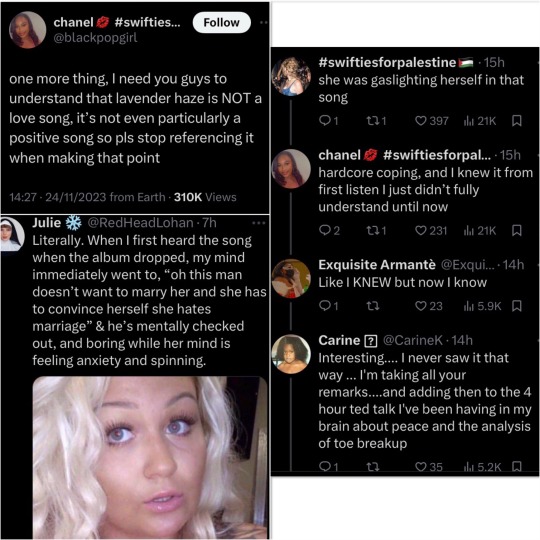
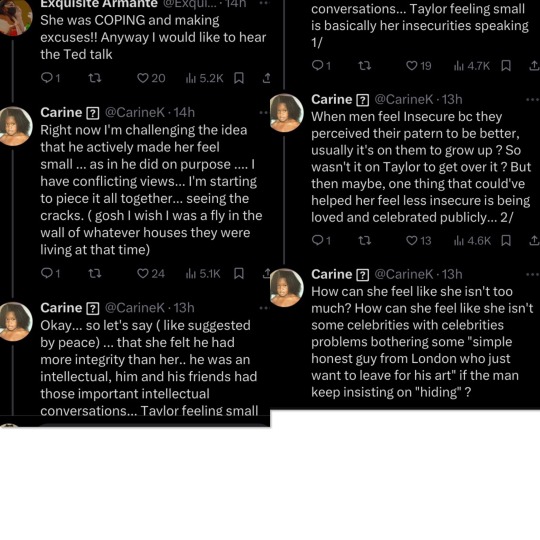
so yeah, that’s how swifties spent their thanksgiving holiday. bitching and moaning about joe alwyn.
#swifties take your medication challenge#shit swifties say#parasocial relationships#toxic swifties#insane swifties#qanon swifties#free joe alwyn
44 notes
·
View notes
Text
It’s official kids don’t read books much anymore.
And only 28% of boys read for fun while 40% of girls read for fun. Statically proven that girls read more and boys read less.
#books and reading#books#fantasy books#warrior cats#percy jackson#eragon#wings of fire#artemis fowl#the wild robot#kids#parents#children’s book#redwall#inkheart#diary of a wimpy kid#Gregor the overlander#moana 2#magic tree house#harry potter#goosebumps#tunnels#guardians of ga'hoole#comic#graphic novel#election 2024#election day
10 notes
·
View notes
Text

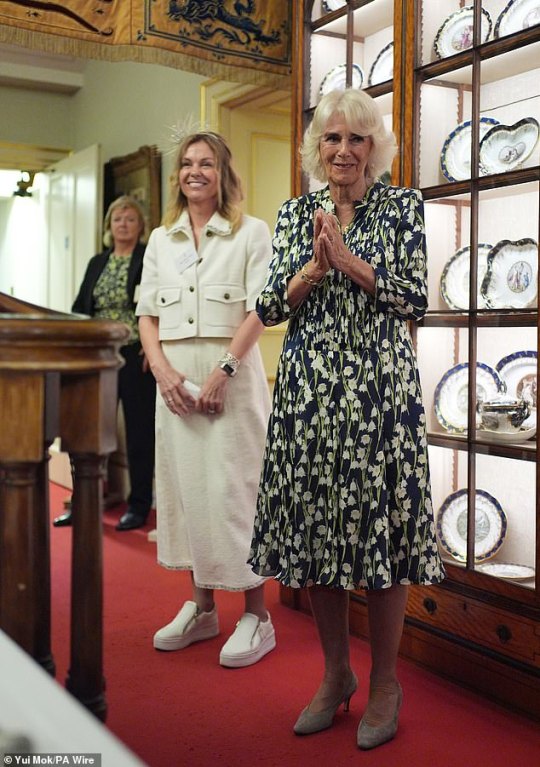
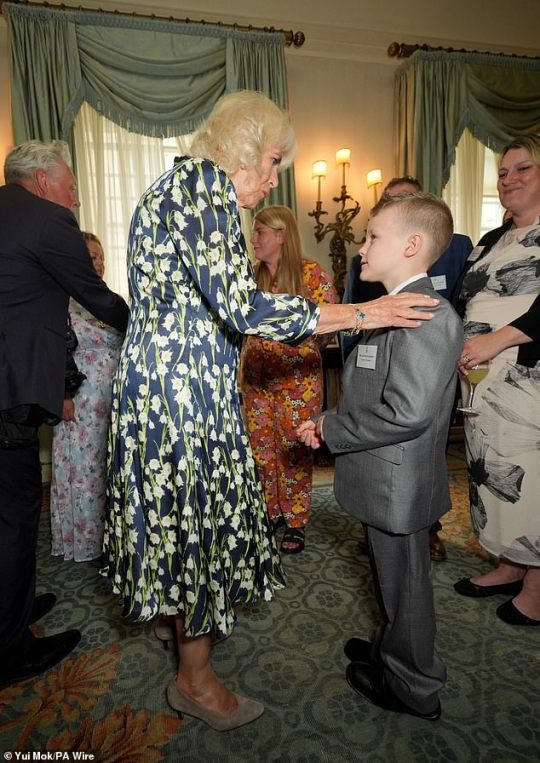
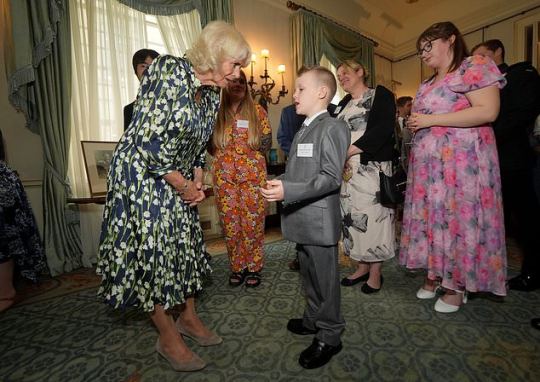
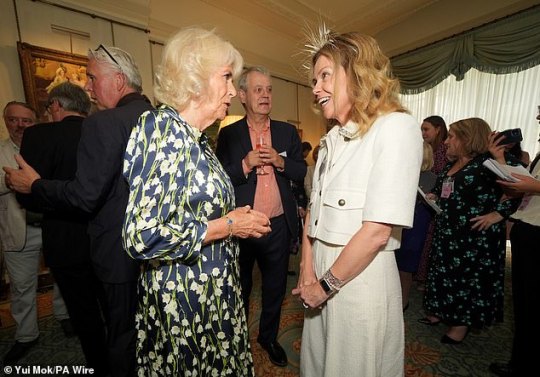
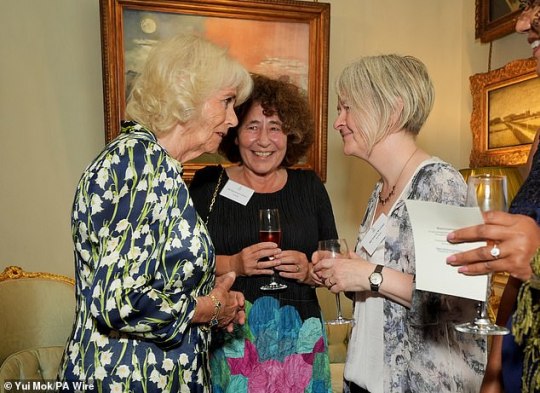
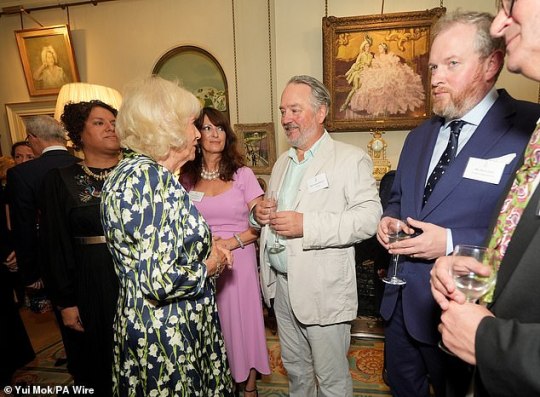

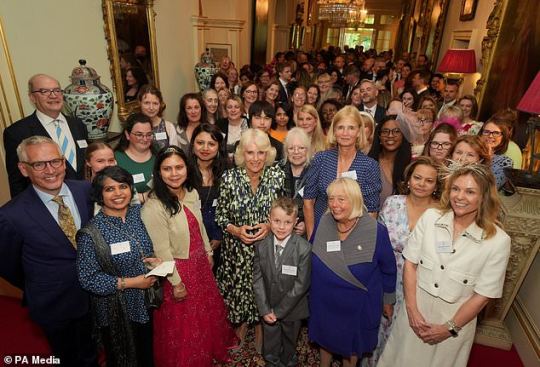
Queen Camilla hosts community volunteers and authors at Clarence House to celebrate the National Literacy Trust charity's 30th anniversary, London, 09.07.2024
40 notes
·
View notes
Text
Every day I log on and see misinformation about the US public school system...

They never stopped teaching phonics guys. It was nationally debated and established as essential in the 90s.
This misinformation comes from the fact that around this time direct phonics instruction was being supplemented by some practices that were supported by shitty/non-existent research. This has been steadily phased out over the last 5-10 years across the US. Also, this was all shit that started in NEW ZEALAND and was being done in every english speaking country in the world. The quality of the US school system is neck-to-neck with all english speaking nations. Worldwide, our students are slightly above average in reading and slightly below average in math.
The problem is that none of these truths are interesting or exciting enough to become editorials or podcasts, so instead we have half-truths about a "reading crisis" in the US (supplemented by the real loss of learning created by the pandemic) being used to fearmonger and further debilitate trust in the public school system.
You will never catch me saying that the US public school system is perfect, but conservatives are trying to gut and privatize it and everyone is playing into their hands. People are using misinformation to make it sound like no one is learning to read anymore, that literacy levels are the lowest they've ever been, that US schools are the worst in the world.
Gag me with a spoon. The truth is boring and mediocre ¯\_(ツ)_/¯
27 notes
·
View notes